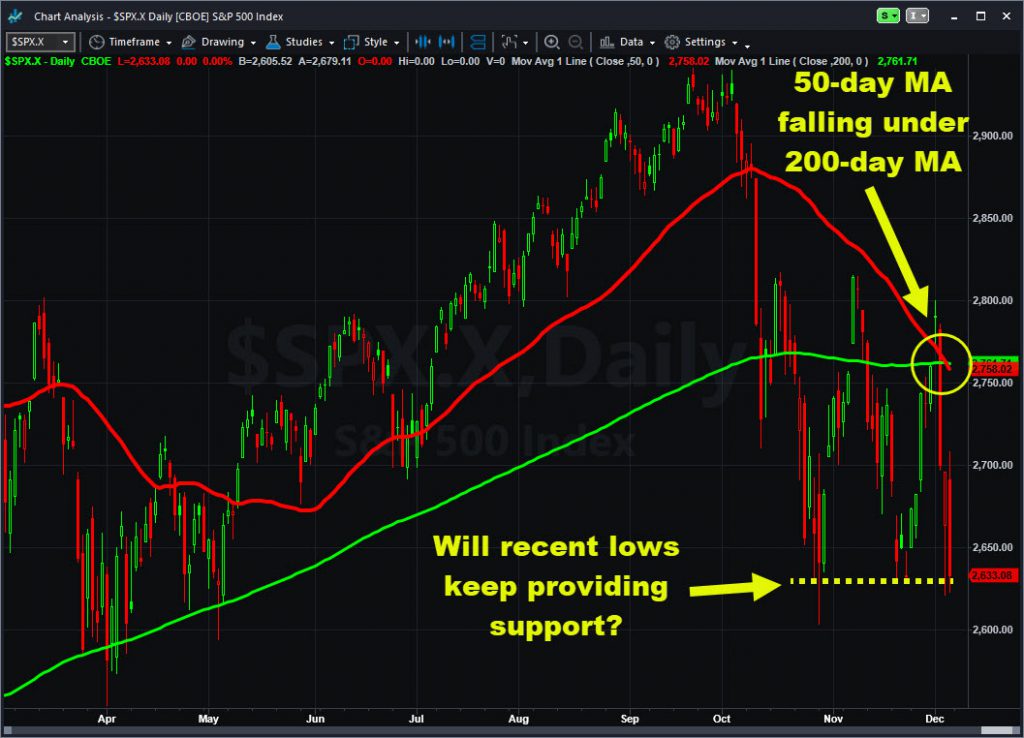Stocks just had their worst week since March as sentiment swung from optimism to fear.
The S&P 500 plunged 4.6 percent between Friday, November 30, and Friday, December 7. Barely one-tenth of the index’s members closed higher. In a potentially bearish sign, selling spread from technology to almost every other corner of the market.
Stocks that track economic growth were hit especially hard. Transports cratered 8 percent — their biggest weekly drop since 2011. Industrials and small caps had similar routs. Ditto for financials, which also faced worries about the drop in longer-term interest rates.
Speaking of rates, do you know that the yield on the 10-year Treasury had its biggest weekly drop in more than three years? That’s another sign of economic fears spreading as data continued to weaken. (This is part of the big story last week regarding the inverted the yield curve.)
Disappointing non-farm payrolls, ADP’s private sector payrolls and jobless claims seemed to confirm those anxieties. However, manufacturing and service-sector data from the Institute from Supply Management beat forecasts.
Chart technicals were also important, with the S&P 500 doing little more than erase the previous week’s big rally. It had jumped on hopes of a dovish Federal Reserve and trade deal with China. But then it crashed as investors worried about why the Fed is dovish (slower growth) and doubts about a deal with China.

Those boom and bust emotional swings have caused a range on the S&P 500 for more than a month. The big question now is whether the index is ready to break its current support zone — especially as year-end approaches. Some technicians may also focus on the so-called death cross after the index’s 50-day moving average fell below the 200-day moving average.
In another potentially ominous sign, gold miners rose almost 6 percent last week. The only other sectors that gained were safe-havens like utilities and real-estate investment trusts.
SVB Financial (SIVB), an obscure regional bank with heavy exposure to Silicon Valley, dropped 19 percent last week. That made it the biggest decliner in the S&P 500. American Airlines (AAL) and Ulta Salon (ULTA) were second-worst with declines of 16 percent and 14 percent.
Retailer AutoZone (AZO) and utility Edison International (EIX) were the biggest gainers, but neither of them managed to climb double digits.
Crude oil was another bright spot, rebounding about 3 percent after OPEC cut 1.2 million barrels of daily supply from oil markets. That followed its worst month in at least 20 years.
This week brings potentially important news from Europe and a handful of economic reports.
Today or tomorrow will likely bring at least one development on Brexit as Parliament votes and courts study the U.K.’s referendum to leave the Euro Zone.
Also on Tuesday, Alphabet CEO Sundar Pichai will testify in Congress and the U.S. producer price index is due.
Wednesday features consumer inflation and crude oil inventories.
Thursday’s the busiest day of the week, with a European Central Bank meeting and initial jobless claims scheduled for the pre-market. Adobe Systems (ADBE) and Costco (COST) release earnings in the afternoon. China will announce industrial production and other data in the evening.
Friday brings U.S. retail sales and industrial production.
Remember the Federal Reserve’s big meeting is the following week, on December 19.


























